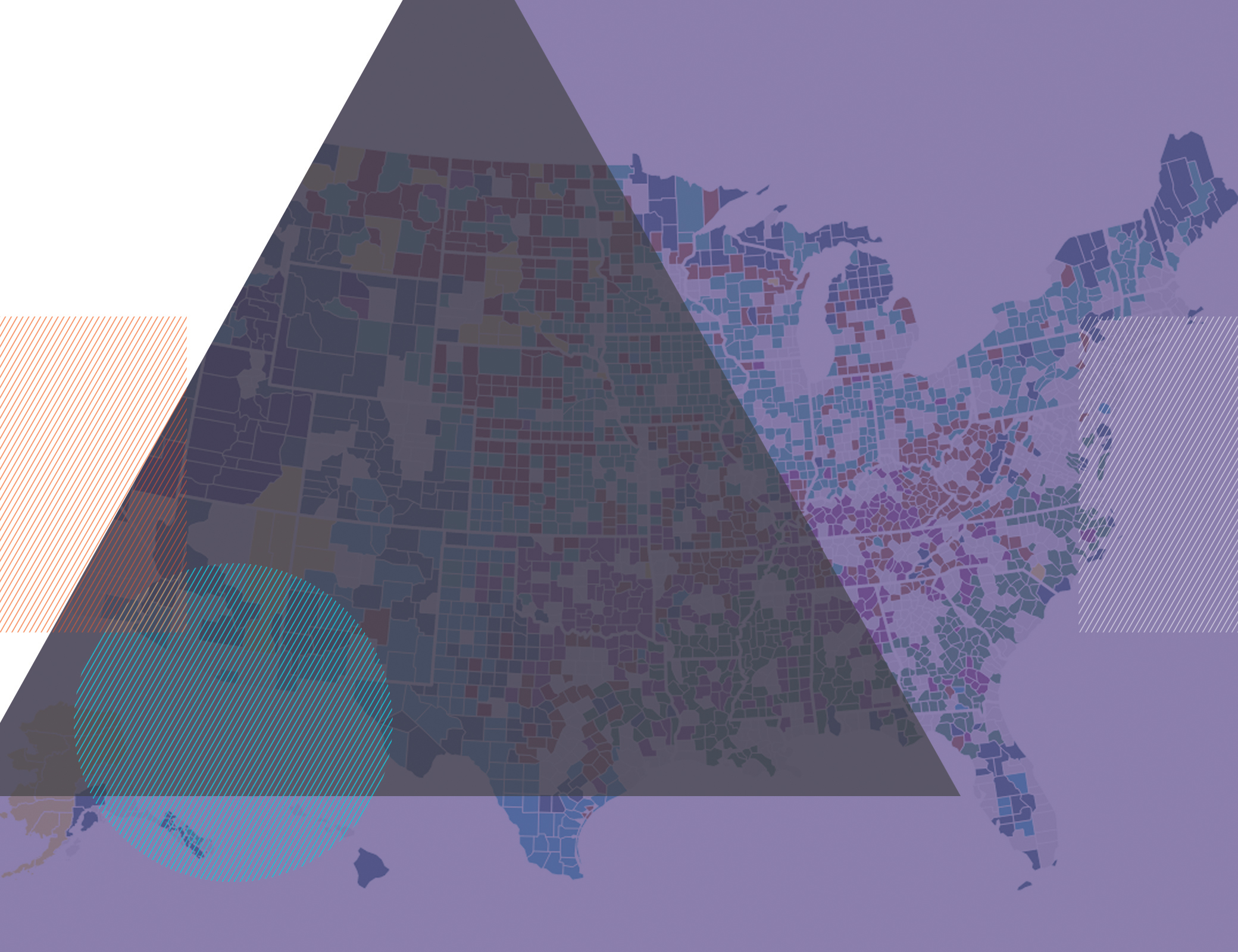Finney County, Kansas: Hispanic Center
Tucked in southwestern Kansas is a county that upends the common conception of rural America as a monolith. Finney County is possibly one of the only rural places in Kansas where Vietnamese pho is a staple and Hispanic grocery stores sell their wares down the street from Somali and Burmese mosques. Here, the community comes together to celebrate Beef Empire Days, the Tumbleweed Festival, Tết (Vietnamese Lunar New Year), Cinco de Mayo, and La Fiesta.
In this majority minority Hispanic Center, more than half of residents are Hispanic or Latino. Approximately 37,000 people live in Finney County, largely in Holcomb (pop. 2,112) and Garden City, the county seat (pop. 26,895).

Garden City boasts the slogan “The World Grows Here,” and aptly the county’s population skyrocketed before the turn of the century. Between 1980 and 2000, the population grew by more than 50%. Migrants from around the globe — primarily Central and South American, Asian, and African countries — have been drawn to Finney County’s agriculture industries and strengthened their development. And for years, refugees made their homes in the county with the aid of a resettlement office.
“We value the presence of different cultures,” says Bertha Mendoza, an extension agent with the Kansas State Research and Extension Southwest Kansas Expanded Food and Nutrition Education Program. Mendoza immigrated to Finney County from Chihuahua, Mexico more than 26 years ago, and now lives in Holcomb, across from the Tyson Fresh Meats packing plant. “We learn from each other.”
A community filled with residents of different backgrounds, languages, and beliefs faces its own set of challenges. One primary obstacle, Mendoza says, is bridging gaps in communication. Learning about services takes time when you have recently moved to the community, or don’t speak the language, she explains. Newcomers often prefer face-to-face meetings over pamphlets and phone calls.
Leaders like Mendoza are crucial — they help connect community members to resources in areas such as health care, housing, nutrition, and employment. Helping out your neighbor is a core value of the community, residents say, and diversity is what makes Finney County thrive. “There really is a kind of in it for everybody mentality here,” says Melissa Dougherty-O’Hara, a planner for Garden City Neighborhood & Development Services.
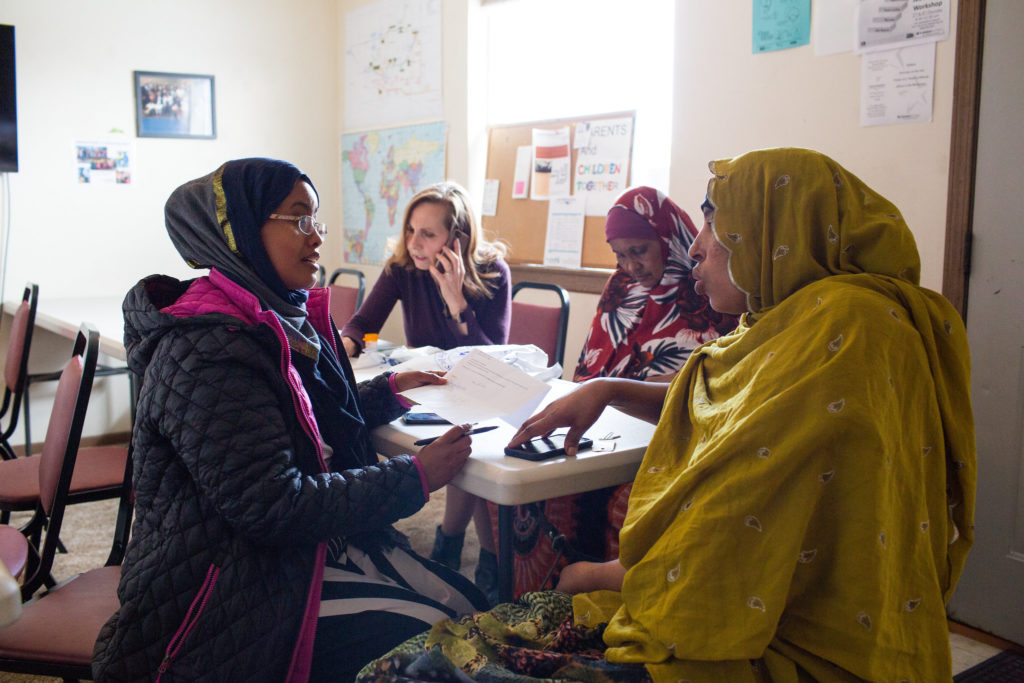
Finney County Index
Finney Within Hispanic Centers and Rural America
Where the World Grows
Community Connectors Bridge Gaps and Foster Dialogue
Economics and Local Businesses
A Need for More Housing
Child Care Is a Challenge
Health and Wellness in Finney County
Local Schools Offer Education in More Ways Than One
A Threat to the Community
Rooted in Agriculture
Embracing Diversity and Looking Forward
Finney Within Hispanic Centers and Rural America
Like most Hispanic Centers, Finney is a young county. Here, 31% of people are under 18, compared to about 27% of people in Hispanic Centers and 22% of the ACP’s rural counties, according to the 2019 County Health Rankings and Roadmaps.
Finney excels in access to food and exercise opportunities, number of primary care physicians, and certain economic measures.
-
-
- On the Food Environment Index Finney County earns an 8.6, higher than the Hispanic Center median of 7.8 and the ACP rural counties median of 7.6.
- About 85% of people have adequate access to locations for physical activity, well above the Hispanic Centers’ median of 68% and rural ACP counties’ median of 60%.
- The primary care physician ratio is 1,749 patients for every 1 physician, compared to 2,549:1 in Hispanic Centers and 2,288:1 across ACP rural counties.
- The county scores well on employment, with a 2.7% unemployment rate, compared to a median of 4% in both Hispanic Centers and ACP rural counties.
- Income inequality, the ratio of household income at the 80th percentile to income at the 20th percentile, is 3.7, on par with U.S top performers. The median for ACP rural counties is 4.4.
-
-
-
- About 14% of residents are uninsured, lower than the Hispanic Centers median of 19% but higher than ACP rural counties median of 11%.
- Adult smoking (18%) and obesity rates (37%) are relatively high – the medians for Hispanic Centers are 16% and 30% of the population, respectively. In rural ACP counties, the median adult smoking rate is 18% and the obesity rate is 33%.
- The county’s teen birth rate is 52 births per 1,000 females ages 15-19, with the rate among Hispanic females (66 birth per 1,000) nearly double that of white females (34 births per 1,000). The median for Hispanic Centers is 49 births per 1,000 and the median for ACP rural counties is 34 per 1,000.
-
Where the World Grows
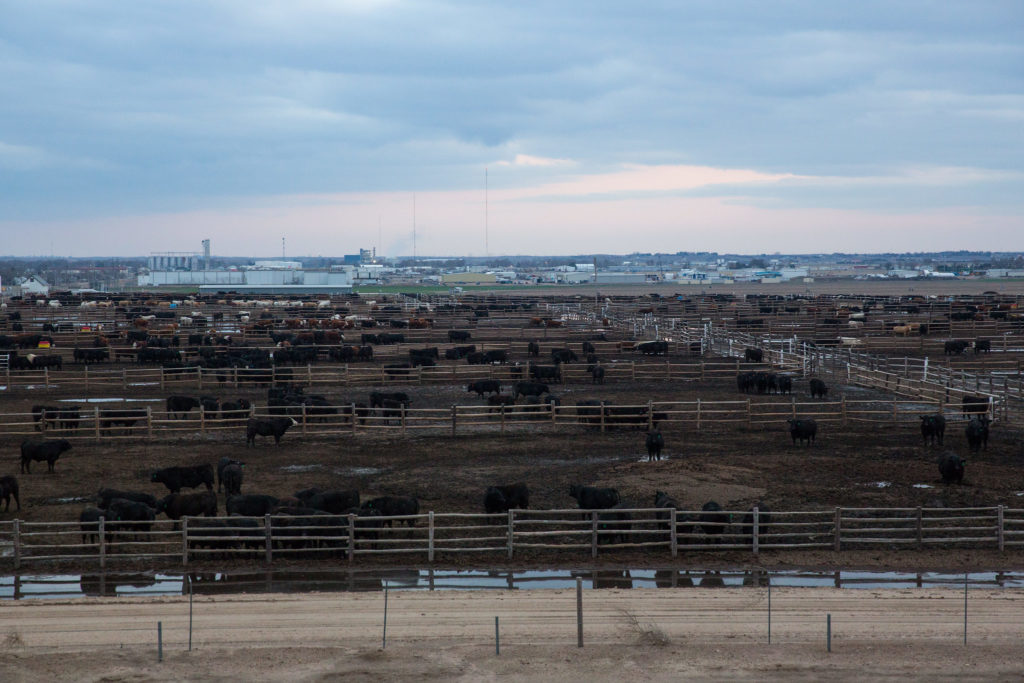
Finney County became a hub for immigrants in the early 1900s when migrants from Mexico began arriving to work on ranches, and later sugar beet farms. The first annual La Fiesta was held in 1926 to celebrate Mexican culture and contributions to the county; the 93rd iteration will be held this fall.
Growth continued with the opening of the country’s largest beef packing plant in Holcomb in 1980. Immigrants from Vietnam arrived to work in the beef industry and later people from Burma, Somalia, and Ethiopia. By the turn of the century, Finney was the fastest growing county in Kansas. Between 2007 and 2008, the county became majority minority.
Today, half of the population is Hispanic or Latino (50%), 5% is Asian, 3% is African American, non-Hispanic and 1% is American Indian or Alaskan Natives. Only 41% of the population identifies as white, non-Hispanic, compared to a median of 88% of the population across ACP rural counties.
About 23% of the population is foreign born and residents speak a plethora of languages — more than two dozen in Garden City alone. In the county overall, 43% of people report speaking a language other than English, according to the U.S. census Bureau’s 2013-2017 American Community Survey 5-Year Estimates. About 12% are not proficient in English.
“When you have these newcomers, it’s a different culture, different practices, different expectations,” says Amy Longa, a Garden City resident and former director of the Garden City International Rescue Committee office, which helped refugees settle into their new lives here. “It’s like holding the hand of a baby and helping them begin to walk, crawl, and then eventually run.”
Listen to Amy Longa talk about the history of migration to Garden City, the county seat of Finney County:
Longa, who is originally from Uganda, moved to Garden City about nine years ago. The IRC office, part of a federally funded program, was forced to close in fall 2018. “They’re still Garden City residents,” Longa says of the refugees who have come through her office, or migrated to Garden City from other cities across the country. “And we know that as Garden City residents, they should have the ability to access the same services as any other Garden City person would. As a city we’re not just going to turn our back, we’re going to be intentional to ensure that we’re filling in those gaps.”
Community Connectors Bridge Gaps and Foster Dialogue
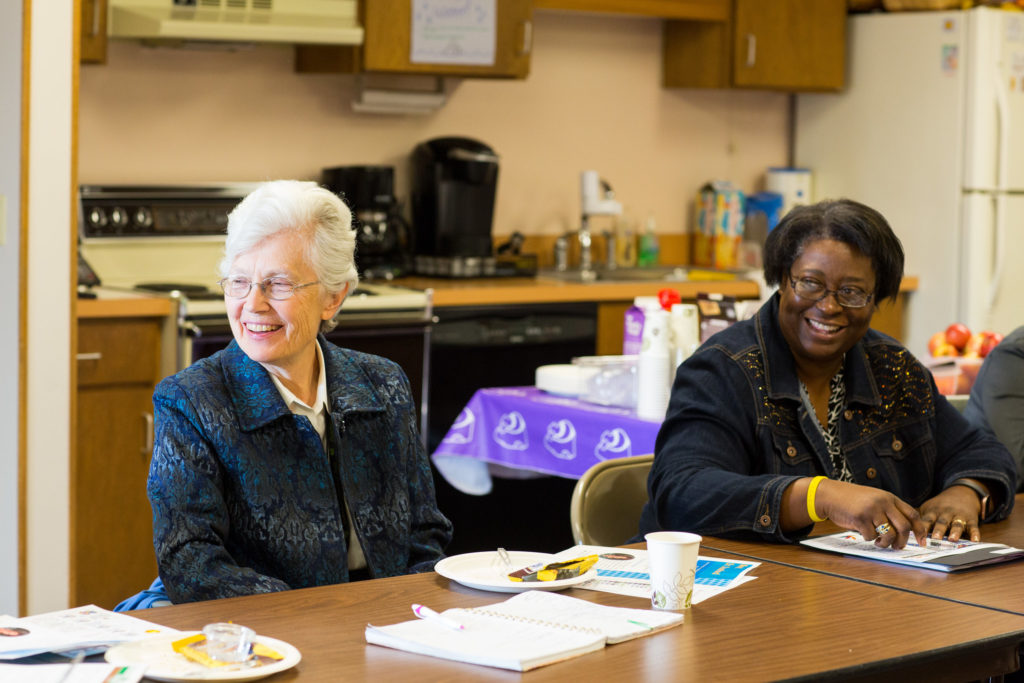
Sister Janice Thome does not get much down time. Thome, a Dominican Sister of Peace with the Dominican Sisters Ministry of Presence, has provided all manner of services to Finney County residents since she moved to Garden City 22 years ago. Her office is her car; in just one day she may drive an expectant mother to a medical appointment and then arrange finding furniture for a newly arrived family. “Our ministry is directed by the person, not by us,” she says. “You can never predict your day because one phone call changes it all.” At age 50 she traveled to Mexico for three months to learn Spanish so she could better serve more of the community.
Thome exemplifies how important communication channels are to connect those in need with services that already exist. People know to call her when utility bills are due or to look for any resource they need at the moment.
A network of leaders and organizations ready to collaborate is a unique strength of the community, according to Garden City Commissioner Shannon Dick. “Why does Finney County do so well?” he says. “We get together and we actually all work towards a common goal.”
And this idea is not abstract; leaders physically meet several times a month to talk about new and on-going projects. At a Community Services Council meeting in March, a representative from the public library presented plans to obtain more books in Farsi, Burmese, and other languages, while Kansas Workforce shared updates on summer job openings.
Garden City is also home to 16 advisory boards, which allow residents to provide input on topics from the local zoo to the police department. One board fostering dialogue between residents of all backgrounds is the Garden City Cultural Relations Board. The board consists of seven members from diverse community groups — across racial, social, ethnic, religious, and economic backgrounds — that aim to promote cultural diversity throughout Garden City. They hold an annual Diversity Breakfast & Multicultural Summit and organize events like World Refugee Day.
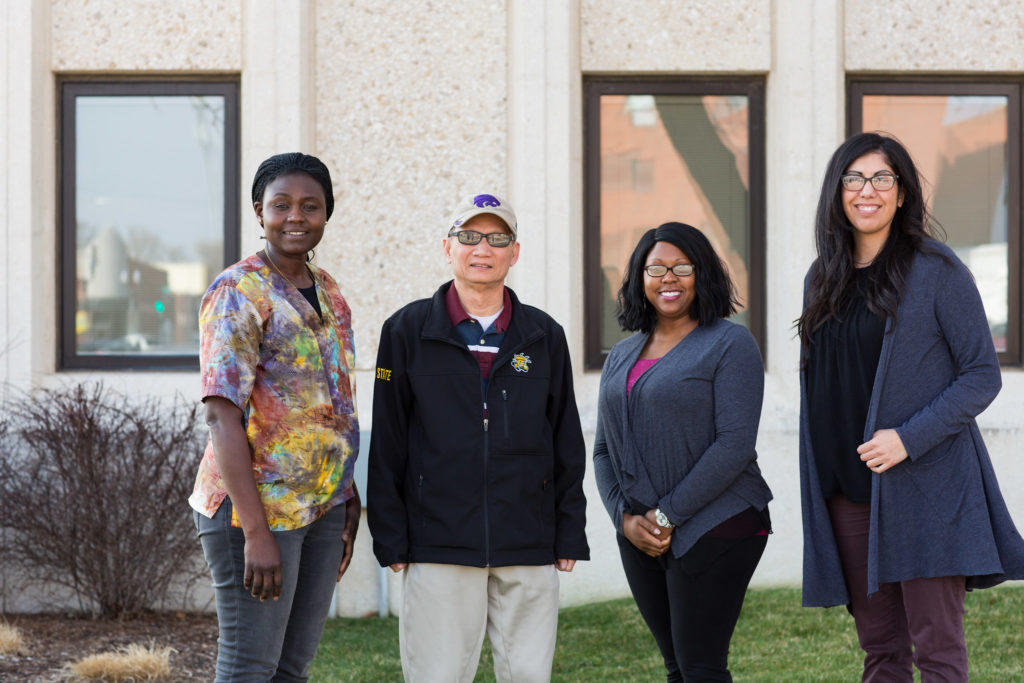
Board member M’Lynn Swartz grew up a few counties over in Elkhart, Kansas. “Growing up in a town of 2,000, my brother and I were the only two African American kids all through school,” she says. “Living here has been very eye opening. It’s one of the reasons I wanted to get on the board, because I wanted to learn about the different cultures and see where I can make an impact in the African American community.”
Job opportunities contribute to the county’s diversification. Once one family comes, they spread the word to friends and family back home, explains Garden City’s staff liaison Allie Medina. But residents old and new have common priorities. “When we are talking to anybody in the community, they want a safe place to live,” Medina says. “A great place to work, a community, a place to be who they are, including expressing their cultures and their celebrations. And this community has been great about showcasing that.”
However, the county’s diversity is not well reflected in leadership positions. Currently, all of Garden City and Finney County commissioners are white and nine out of 10 are male. “I don’t feel that we are well-represented,” Mendoza says of the lack of women and minorities involved in decision making. “It’s important because we can bring information to the table.” She would also like to see more support for entrepreneurs in the community, particularly for those who do not speak English as a first language. Mendoza says she would love to help start a Hispanic Chamber of Commerce.
Another persistent challenge in strengthening their diverse community, according to Medina, is a lack of translators. “We’re always searching for that, to translate documents throughout the city and school,” Medina says. Vinh Nguyen, a board member who immigrated from Vietnam and has worked for the Garden City School District for 26 years, is a go-to resource for translations on the fly. He regularly receives calls from the police or the school asking for translation help; they all have his business card or cell phone number. “They call, I am ready to work with them,” he says.
Longa says access to information and the ability to participate should be a right of all community members. “If you’ve been in Garden City for ten years, you are around the table, if you have been in Garden City for a day, you are around the table,” Longa says. “So that we all walk together and continue to make this place what we all want it to be. Nobody is going to make it for us.”
Economics and Local Businesses
The county’s median household income is $54,500, lower than the state’s median income of $56,400, but significantly higher than the median for Hispanic Centers ($46,200).
Although employment rates are high, a significant portion of Finney residents live in poverty, particularly residents of color. About 11% of the white population live in poverty, compared to 33% of the African American population and 22% of the Hispanic population. Likewise, 18% of white children live in poverty compared to 31% of African American children and 24% of Hispanic/Latino children. Around 71% of children qualify for free or reduced lunch.
The county has focused on economic growth and attracting big name retailers and chain restaurants such as Sam’s Club, Old Chicago Pizza and Taproom, and Buffalo Wild Wings. Still, Finney has that small-town feel where you cannot go to the grocery without seeing someone you know.

The largest employer in the county, Tyson Fresh Meats, employs approximately 3,000 people in its meatpacking plant and wages start at $16.60 an hour. Local schools, St. Catherine’s Hospital and retail outlets are also major employers. People come from all over to shop at the stores in Garden City. “On the weekends here, you would think we are twice our size,” Dougherty-O’Hara says.
The small business sector highlights the county’s diversity. In 1990, local business owner Luz Garcia came to Kansas for what she calls the “Mexican dream,” the opportunity to earn a living and care for her family. Her brother was already in Garden City, working at Tyson. She met her husband here; she worked at Tyson for seven years and he worked there for 22. The Garcias always planned to open businesses in Mexico, but when Luz’s mom passed away and a friend offered a chance to take over a local carnicería (butcher shop), they decided to take the opportunity.
The big stores like Sam’s Club don’t bring down her business. In fact, they come and scout how her shop operates and check her prices, she says. And on pay day, her shop is always full.
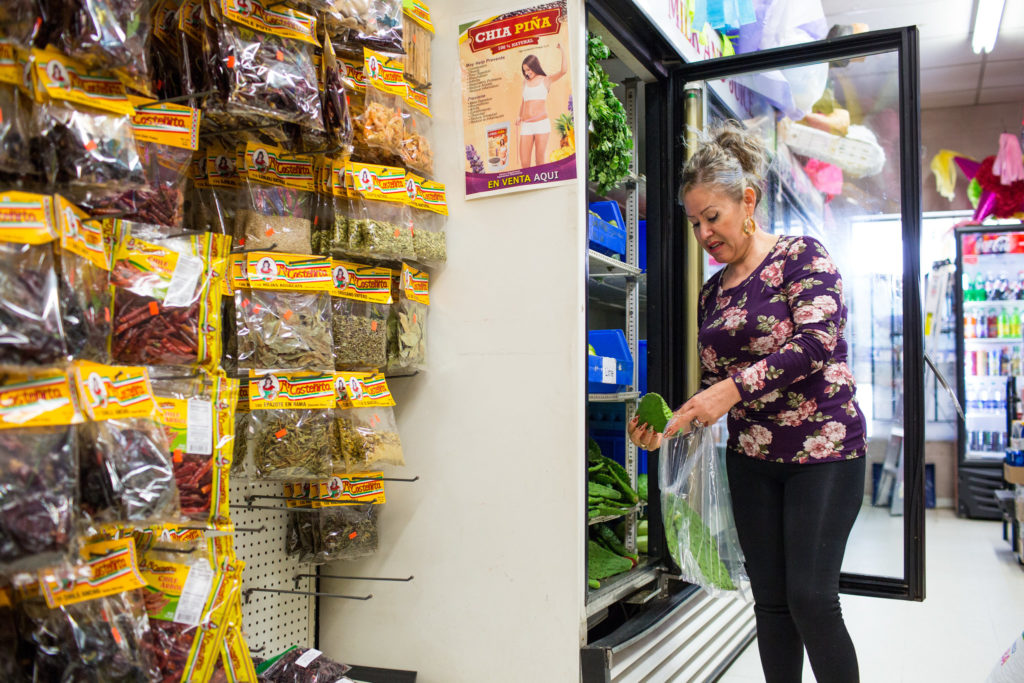
A Need for More Housing
Housing shortages and affordability are significant concerns in Finney County. The median value of an owner-occupied home is about $126,000. A quarter of Finney County residents spend more than 30 percent of their income on housing.
Dougherty-O’Hara moved here a year and a half ago to work as a planner for Garden City Neighborhood & Development Services. There is a misconception that as incomes grow, people will move into new homes, freeing up starter homes, she says. That has not happened as frequently or quickly as needed in Finney County.
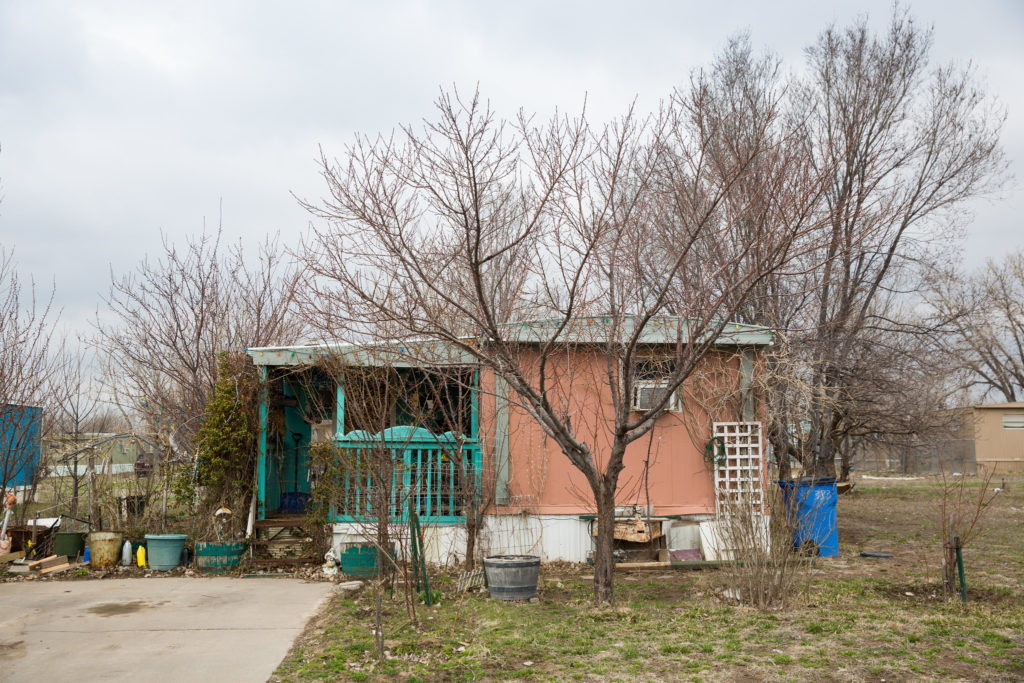
The percentage of units occupied by owners in Finney County dropped from 72% in 2000 to 62% in 2015, according to a 2017 community housing assessment. Local leaders also contend that, based on indicators such as utility bills and employment, an undercount occurred in the 2010 census; they adjust projected housing needs higher.
Barriers to accessing housing are disproportionately impacting minorities. A survey of county residents conducted in 2016 found that white respondents were twice as likely to own their homes as non-white respondents. Housing issues hit immigrants in Finney particularly hard. The county’s lack of affordable housing, according to the Robert Wood Johnson Foundation, “results in newly arrived families living in cramped housing or large apartment complexes, which can separate them from the larger community.”
One tool being used to address housing shortages: a tax rebate program called the Rural Housing Incentive District, or RHID. In 2019, developers are estimated to build 170 units with the RHID program. This incentive has helped add more lots for housing developments, but not necessarily income appropriate housing.
“It’s been very difficult to build a house here in Garden City for less than $200,000, just due to labor shortages, getting the supplies out here,” Dougherty-O’Hara says. “It’s all more costly.” One of the biggest needs is affordable housing between $90,000 and $150,000.
Only 50 to 60 units may be for sale at any given point. “I think a lot of people are just staying in a home they can afford,” Dougherty-O’Hara says. Nearby Holcomb, which also has a young, but much smaller population than Garden City, has been able to meet most of its demand according to the 2019 Community Housing Assessment.
Nicole Hahn, vice president of community development at the Finney County Economic Development Corporation (FCEDC), sees movement in the right directions. “We’ve finally gotten to the point where we have been able to attract big developers and have local builders on board to build apartment complexes and duplexes,” she says.
That partnership is crucial because the competitive housing market has already deterred potential employers and employees. “People move here and say, ‘I can’t afford that house,’” Hahn says. The Tyson meatpacking plant has felt the effects of insufficient affordable housing. “While the community has been focusing on new housing developments, the value of new houses is beyond the price range for many hourly workers,” says Pat Sanders, Tyson Fresh Meats community liaison. “It is critical for employees to have access to affordable housing to support attendance and overall health and well-being, which supports their ability to be successful at work.”
FCEDC is also working on partnerships with local builders to go in on buying their materials all together, in hopes of getting a better bulk rate. “We are building houses faster than we ever have,” says Dick, who is a strategic analyst for FCEDC. “It’s just not fast enough.”
Child Care Is a Challenge
Finney County faces a shortage of licensed child care — about 700 slots worth. The shortage means that people, not by choice, are staying home with kids or turning down jobs because they can’t find reliable child care, Hahn says. Businesses recognize it’s a problem.
Tyson employees may not have family or neighbors to help with child care, Sanders says. Finding child care is especially a challenge for those who work second or third shift. “Current local community child care opportunities are stretched beyond their means to meet the community’s needs,” she says. “The local child-care shortage and limited child care availability outside of normal business hours has contributed to business challenges, such as turnover.”
Regulations make it difficult to run a child care facility as a business, and FCEDC is helping existing entities become licensed. FCEDC also works with organizations like the Garden City School District to help offset some of the costs. “I think in the last year or so we have been turning the tide on getting the private businesses to buy in, to make this all work,” Hahn says. FCEDC has made strides toward setting up an early childhood education program at Garden City Community College, with a partial program starting this fall and the full program slated to roll out in 2020. Garden City High School is also helping train students to fill teacher slots in child care centers as they open.
The plan is to create a Finney County Early Learning and Childcare Network, which will involve building small centers (59 children each) around the county, with a central administrative center that will be able to hold about 90 children. Tuition would be affordable at about $165 per week.
Health and Wellness in Finney County
The county employs a community-oriented approach to tackle its health challenges. The LiveWell Finney County Health Coalition formed in 1995 with sponsorship from St. Catherine’s Hospital. The mission of the Coalition is to improve the health, well-being, and safety of the people of Finney County by collaborating to build a better community.
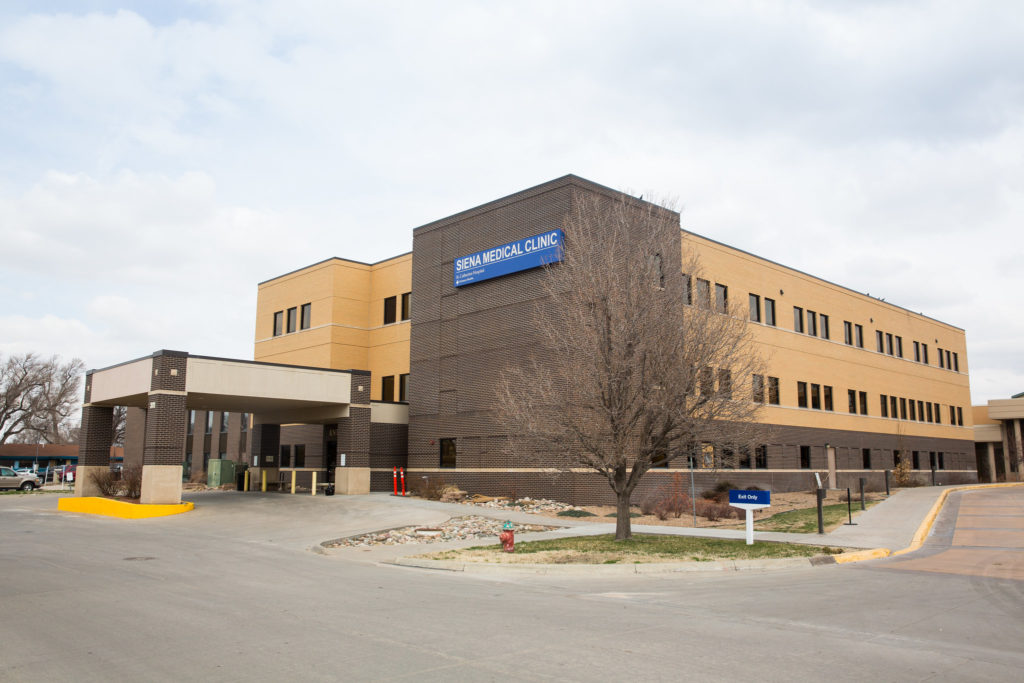
Access to care and getting to appointments are top health needs for immigrants in the community. It’s now second nature for the health coalition to bring translators to outreach events. “Imagine if you had something really wrong with you and you could not communicate one-on-one with your provider,” says LiveWell Finney County Community Health Director Beth Koksal. “I think the health-care system is confusing for everybody and more confusing if you are new to America and new to the system and don’t speak English.”
LiveWell offers help as needs arise, such as taking someone for a driver’s license test and helping translate materials or conversations. “One of the great things about rural America is you take care of each other,” Koksal says. “Everyone is our neighbor here.”
Since 2013, LiveWell has managed the Neighborhood Learning Center, which provides education and health services at the Garden Spot Rentals, an apartment complex largely inhabited by immigrants. The center has been a “bridge to the health care system” for these residents, says Birgit Lemke, who manages the center and oversees a community health worker program. It has also helped reduce domestic violence in the area by nearly 40%, according to LiveWell. However, the center’s funding, which came through a violence prevention grant, has ended and the center will close if funds cannot be secured.
Local Schools Offer Education in More Ways Than One
One sector in Finney County where everyone intermixes: the Garden City School District. From a young age, students learn alongside classmates of different races and ethnicities. Students at Garden City High School were born in 29 different countries and speak 28 languages.
“We encourage them to keep their family identity, their culture,” Garden City High School Principal Steve Nordby says. “But we also set a tone of respect for everyone else’s point of view.”
In the documentary Strangers in Town filmmakers Steve Lerner and Reuben Aaronson share the story of Garden City’s diversity through the eyes of the people who live there, particularly youth at Garden City High School. Watch the Strangers in Town trailer:
“I think Garden City is still trying to get used to the fact that we are super diverse,” student Alondra Fuentes says in the film. “And that we are trying to mesh together in this tiny city.”
The school has English as a Second Language (ESL) classes for students who have lower levels of English. The state has even recommended that surrounding districts with changing student demographics come observe Garden City’s ESL program, Nordby says.
Recruiting teachers can be a challenge due to location, Nordby explains. It also takes a special kind of teacher to teach at the high school. “You are going to work with an extremely diverse group of kids with tons of different life experiences,” Nordby says. Some students have experienced trauma and adverse life experiences; just a year ago they may have been living in a refugee camp. Garden City High School is emphasizing social-emotional learning and recently implemented a social-emotional screening three times a year.
The school is organized into four different academies, each with its own principal, counselor, and secretary; one just for freshmen, a school of public service, a school of arts and communications, and a school of trade and health science. “We do a lot of career exploration,” Nordby explains. “They pick an academy based on what electives they want to be in.” The trade and health sciences academy is one of the fastest growing, with more than 800 students currently. Students in this academy are building a miniature house that they will sell and use the profits to build another one.
Garden City High School also emphasizes community service and leadership. The students recently pushed, successfully, to raise the minimum age for local tobacco sales to 21.“What gives me the most hope is seeing the kids here being the future leaders of the community,” Nordby says. “We are developing kids who are used to knowing what is to serve somebody and make community connections.”
Retention and education are important issues in the county. Nearly one-fifth (19%) of Finney residents do not have a high school education and only 50% have attended some college.
Nordby says about two-thirds of Garden City High School students go on to a two or four-year college. Garden City Community College is a crucial asset for Finney County, and the high school maximizes this with a dual-credit program.
Upward Academy, a potential program at the Tyson meat packing plant in partnership with the Garden City Career Connection Academy, could also help improve education in the community. Though a launch date has not yet been set, the program would include free ESL and GED classes for Tyson employees.
A Threat to the Community
Despite the values of acceptance and empathy in the county, prejudice and racism still exist in pockets. Garden City made national news in 2016 when three white men plotted to blow up a mosque and an apartment complex housing dozens of Muslim refugees, including children. The FBI foiled the terrorist attack by the group, which called itself the Crusaders.
Finney County rallied in support of its immigrants and refugees following the threat. A strong relationship between the police department and the community was integral. “I remember talking to a lot of the people in the complex and they just wanted to know, ‘Why me?’” says Deborah Oyler, executive director of Finney County United Way. “This wasn’t an attack on the Somali community, this was an attack on Garden City.”
A few weeks after the plot was foiled, the city held a candlelight vigil to support the Muslim community. “I was amazed at how many different cultures came together,” Oyler says. “Together it was unbelievable.”
Rooted in Agriculture
Garden City may boast a Target with a Starbucks, but it is a rural place, residents say. Across the county, population density is low, at 28 people per square mile.
“It has a rural town isolation because we are not off an interstate,” Dougherty-O’Hara says. “You talk in hours about the time it takes to get someplace, you don’t talk about miles here. With that isolation we have a unique identity to work and build together. We can’t shun any one part of our populace without it really hurting all of us as a whole.”
Agriculture and food businesses employ roughly 4,776 people in the county, including Shane Knoll, a fourth-generation farmer and a board member of the Finney County Farm Bureau. With his brother, Zach, and help from his wife, Andrea, he runs a 3,000-acre family farm on the border of Holcomb and Garden City. They grow wheat, corn, soybeans, and milo.

Nowadays, fewer farmers are farming more ground. As of 2017, 450 farms were operating in Finney County, down from 516 farms in 2007. In that decade, the average size of a farm grew from 1,473 acres to 1,757 acres. “We are very agriculture-based,” Andrea Knoll says of the county. “But we do not have a lot of farmers in the area.”
The barriers to entry are so high that most of the current small- or medium-sized farms have been passed down through generations. While he inherited the farm from his parents, Shane Knoll says it was his decision to farm after earning an agriculture degree at Garden City Community College. “You grew up doing it and that’s what you’re used to,” he says. “I wanted to come back.”
It’s not an easy occupation. “The most stressful part of farming is the amount of money you get built up and then you only have one chance for a harvest,” he says. Dealing with drought is another major challenge. The Knolls use moisture sensors in their corn fields to conserve water.
Even though surrounding farmers are competitors, they will drop everything to help each other. “You know, just neighbors helping neighbors,” Shane Knoll says.
Embracing Diversity and Looking Forward
Finney County has grown in leaps and bounds since it began welcoming an influx of immigrants in the 1980s. “That was the first kind of learning curve for us, that we need to teach English, help people adapt to our community and celebrate their culture,” Hahn says. “These people wanted to live here, so we are going to welcome them.”
“Our children don’t know how blessed they are,” she adds.
This diversity and acceptance have drawn some young residents back and will continue to shape the county, Dougherty-O’Hara says.
“If we have a strong foothold of embracing other cultures and communities here that’s going to help us build our next generation,” Dougherty-O’Hara says. “We are growing America, we are growing a diverse America, and to discredit immigrants to our communities, especially in rural towns, that’ll be the death of you.”
Megan Jula was a graduate assistant with the American Communities Project from October 2018 through June 2019.
